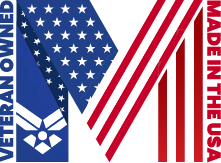For your Consumer Packaged Goods Brand
As a chief marketing officer or small business owner in the consumer packaged goods industry, you know that packaging is a critical component of your brand identity. After all, your packaging is often the first touchpoint consumers have with your brand, and it can make or break their purchase decision. That’s why you should seriously consider adopting flexible packaging for your products. Flexible packaging offers many benefits that can help you differentiate your brand and drive sales. In this blog post, we’ll explore the top five benefits of flexible packaging for your consumer packaged goods brand.
Enhanced Product Protection
One of the most significant benefits of flexible packaging is that it provides superior protection for your products. Flexible packaging is highly customizable, allowing you to create perfectly tailored packaging to your product’s needs. For instance, you can design packaging that offers barrier protection against oxygen, moisture, and light, which is essential for preserving the freshness and quality of perishable products like food and beverages. Flexible packaging can also be designed to be puncture-resistant, protecting your products from damage during shipping and handling.

Increased Shelf Appeal
Flexible packaging isn’t just functional; it’s also visually appealing. Flexible packaging materials like foil, plastic, and paper can be printed with eye-catching graphics, colors, and designs that help your product stand out on crowded store shelves. In addition, flexible packaging can be designed to be resealable, which not only adds convenience for consumers but also keeps your product fresh for longer, increasing the likelihood that they will purchase it again.
Reduced Environmental Impact
Sustainability is becoming increasingly important to consumers, and flexible packaging can help you reduce your brand’s environmental impact. Flexible packaging is lightweight and requires less material than traditional packaging, meaning less landfill waste. Flexible packaging materials like pouches, bags, and sachets can also be recycled, making them a more sustainable choice than single-use plastics. By adopting flexible packaging, you can position your brand as environmentally conscious and appeal to consumers who prioritize sustainability.
Improved Cost-Effectiveness
Flexible packaging can also be more cost-effective than traditional packaging. Because flexible packaging requires less material to produce, manufacturing and shipping can be less expensive. In addition, flexible packaging materials like pouches and sachets can be produced in high volumes, leading to lower production costs over time. By reducing your packaging costs, you can allocate more resources to other business areas, such as marketing, research, and development.
Versatility
Finally, flexible packaging is incredibly versatile, making it an excellent choice for a wide range of consumer packaged goods brands. Flexible packaging can be produced in various sizes and shapes, and can even be customized with unique features like zippers, spouts, and transparent windows. This versatility means that you can create packaging that meets your product’s specific needs while also standing out on store shelves.
Conclusion
Flexible packaging offers a host of benefits for consumer packaged goods brands, from enhanced product protection to increased shelf appeal. By adopting flexible packaging for your products, you can differentiate your brand, reduce your environmental impact, and even improve your bottom line. If you’re looking for ways to take your brand to the next level, flexible packaging is an excellent place to start.






